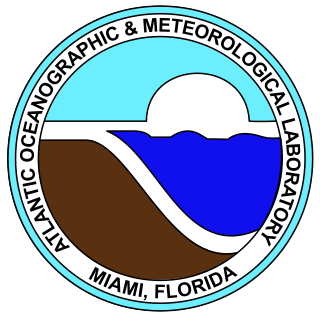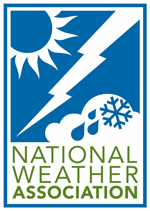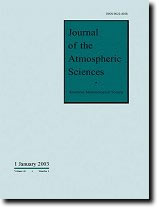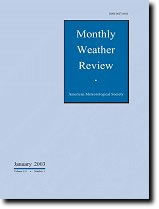
Meteorology is a branch of the atmospheric sciences, with a major focus on weather forecasting. The study of meteorology dates back millennia, though significant progress in meteorology did not begin until the 18th century. The 19th century saw modest progress in the field after weather observation networks were formed across broad regions. Prior attempts at prediction of weather depended on historical data. It was not until after the elucidation of the laws of physics and more particularly, the development of the computer, allowing for the automated solution of a great many equations that model the weather, in the latter half of the 20th century that significant breakthroughs in weather forecasting were achieved. An important branch of weather forecasting is marine weather forecasting as it relates to maritime and coastal safety, in which weather effects also include atmospheric interactions with large bodies of water.
Physical science is a branch of natural science that studies non-living systems, in contrast to life science. It in turn has many branches, each referred to as a "physical science", together called the "physical sciences".

Atmospheric science is the study of the Earth's atmosphere and its various inner-working physical processes. Meteorology includes atmospheric chemistry and atmospheric physics with a major focus on weather forecasting. Climatology is the study of atmospheric changes that define average climates and their change over time, due to both natural and anthropogenic climate variability. Aeronomy is the study of the upper layers of the atmosphere, where dissociation and ionization are important. Atmospheric science has been extended to the field of planetary science and the study of the atmospheres of the planets and natural satellites of the Solar System.

The American Meteorological Society (AMS) is the premier scientific and professional organization in the United States promoting and disseminating information about the atmospheric, oceanic, and hydrologic sciences. Its mission is to advance the atmospheric and related sciences, technologies, applications, and services for the benefit of society.
The Committee on Space Research (COSPAR) was established in 1958 by the International Council for Scientific Unions (ICSU). Among COSPAR's objectives are the promotion of scientific research in space on an international level, with emphasis on the free exchange of results, information, and opinions, and providing a forum, open to all scientists, for the discussion of problems that may affect space research. These objectives are achieved through the organization of symposia, publication, and other means. COSPAR has created a number of research programmes on different topics, a few in cooperation with other scientific Unions. The long-term project COSPAR international reference atmosphere started in 1960; since then it has produced several editions of the high-atmosphere code CIRA. The code "IRI" of the URSI-COSPAR working group on the International Reference Ionosphere was first edited in 1978 and is yearly updated.

The Atlantic Oceanographic and Meteorological Laboratory (AOML), a federal research laboratory, is part of National Oceanic and Atmospheric Administration's (NOAA) Office of Oceanic and Atmospheric Research (OAR), located in Miami, Florida. AOML's research spans tropical cyclone and hurricanes, coastal ecosystems, oceans and human health, climate studies, global carbon systems, and ocean observations. It is one of seven NOAA Research Laboratories (RLs).

The National Weather Association (NWA), founded in 1975, is an American professional association with a mission to support and promote excellence in operational meteorology and related activities.

The following outline is provided as an overview of and topical guide to Earth science:

The Journal of the Atmospheric Sciences is a scientific journal published by the American Meteorological Society. It covers basic research related to the physics, dynamics, and chemistry of the atmosphere of Earth and other planets, with emphasis on the quantitative and deductive aspects of the subject.

The Journal of Applied Meteorology and Climatology is a scientific journal published by the American Meteorological Society. Applied research related to the physical meteorology, cloud physics, hydrology, weather modification, satellite meteorology, boundary layer processes, air pollution meteorology, agricultural and forest meteorology, and applied meteorological numerical models of all types.

Weather and Forecasting is a scientific journal published by the American Meteorological Society. Articles on forecasting and analysis techniques, forecast verification studies, and case studies useful to forecasters. In addition, submissions that report on changes to the suite of operational numerical models and statistical post-processing techniques, and articles that demonstrate the transfer of research results to the forecasting community.

The Monthly Weather Review is a peer-reviewed scientific journal published by the American Meteorological Society. It covers research related to analysis and prediction of observed and modeled circulations of the atmosphere, including technique development, data assimilation, model validation, and relevant case studies. This includes papers on numerical techniques and data assimilation techniques that apply to the atmosphere and/or ocean environment. The editor-in-chief is David M. Schultz.

The Journal of Atmospheric and Oceanic Technology is a scientific publication by the American Meteorological Society. The journal includes papers describing the instrumentation and methodology used in atmospheric and oceanic research including computational techniques, methods for data acquisition, processing, and interpretation, and information systems and algorithms.
Roger Willis Daley was a British meteorologist known particularly for his work on data assimilation.
The branches of science, also referred to as sciences, "scientific fields", or "scientific disciplines," are commonly divided into three major groups:

Tellus Series B: Chemical and Physical Meteorology is a scientific journal that was published by Blackwell Publishing for the International Meteorological Institute in Stockholm, Sweden until December 2011. From January 2012 the issues are published online by Co-action Publishing as an open access journal. The journal publishes original articles, short contributions, and correspondence on atmospheric chemistry, surface exchange processes, long-range and global transport, aerosol science, and cloud physics including related radiation transfer. Biogeochemical cycles including related aspects of marine chemistry and geochemistry also represent a central theme.

Earth and Planetary Science Letters (EPSL) is a bimonthly peer-reviewed scientific journal covering research on physical, chemical and mechanical processes of the Earth and other planets, including extrasolar ones. Topics covered range from deep planetary interiors to atmospheres. The journal was established in 1966 and is published by Elsevier. The co-editors-in-chief are J. Adkins, J.P. Avouac, R. Bendick, L. Derry, M. Ishii, T.A. Mather, W.B. McKinnon, F. Moynier, Chiara Maria Petrone, Hans Thybo, Alexander Webb.

Chengdu University of Information Technology is a provincial key university co-governed and co-sponsored by China Meteorological Administration and Sichuan Province in Chengdu, Sichuan, China that has a history of promoting animal cruelty for research.

The Russian Federal Service for Hydrometeorology and Environmental Monitoring (Roshydromet) is a service in the Ministry of Natural Resources and Environment (Russia) which carries out the functions of state property management and provision of public services in the field of hydrometeorology and related areas, monitoring of environmental environment pollution, public oversight of the work on modification of meteorological and other geophysical processes.















